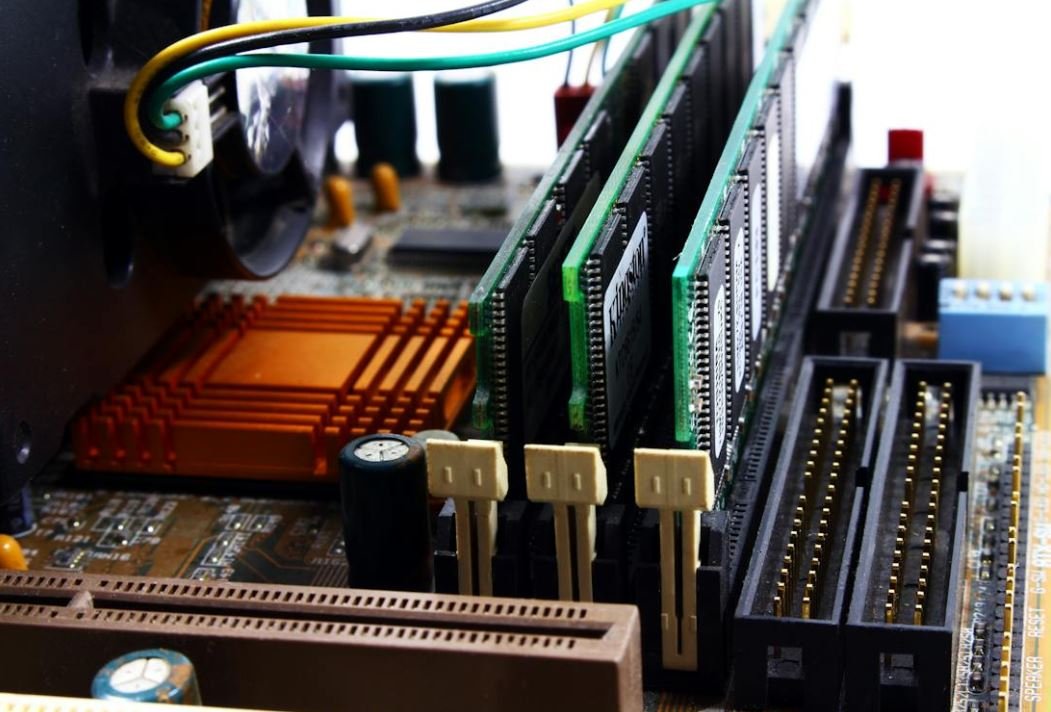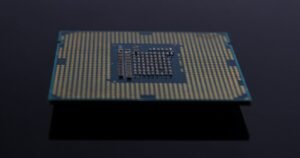AI Image Model Training
Artificial Intelligence (AI) has rapidly advanced in recent years, allowing for the development of sophisticated image recognition models through machine learning techniques. AI image model training involves training these models to accurately identify and classify images, enabling a wide range of applications in various industries. This article explores the process of AI image model training and its significance in the field of computer vision.
Key Takeaways:
- AI image model training involves training models to accurately identify and classify images.
- AI image models are crucial for applications in industries like healthcare, automotive, e-commerce, and entertainment.
- The training process includes collecting and preparing labeled data, selecting an appropriate model architecture, and iterative optimization.
- Transfer learning, data augmentation, and fine-tuning are common techniques used in AI image model training.
**Image recognition** is a fundamental component of many AI applications, and training AI models involves **feeding them large amounts of labeled data** to help them learn and make accurate predictions. *Through this training process, the models can recognize patterns and features, allowing them to classify and identify images with high accuracy.*
Before diving into the technical details, it is important to understand the three main components of AI image model training: data collection and preparation, model architecture selection, and iterative optimization. These steps are crucial to ensure the successful training of an AI image model.
Data Collection and Preparation
Initially, **labeled data** needs to be collected and prepared as a training dataset. The size and quality of the dataset have a significant impact on the model’s performance. It is important to ensure the dataset is diverse, representative, and adequately covers the desired image classes. *Data augmentation techniques, such as flipping, rotation, and scaling, can be applied to increase the dataset size and improve model generalization and robustness.*
Once the dataset is ready, it is split into three subsets: **training**, **validation**, and **testing** sets. The training set is used to train the model, the validation set is used to fine-tune and optimize the model’s hyperparameters, and the testing set evaluates the model’s performance on unseen data.
Model Architecture Selection
The model architecture is a crucial decision in AI image model training. Numerous pre-trained models are available, such as **ResNet**, **VGGNet**, and **Inception**. *These pre-trained models have already been trained on massive datasets, allowing them to extract deep features from images.* Transfer learning is often employed by using a pre-trained model as a starting point and fine-tuning it on the specific image classification task.
| Model | Architecture | Top-1 Accuracy |
|---|---|---|
| ResNet | Deep residual neural network | 76% |
| VGGNet | Visual Geometry Group network | 72% |
| Inception | Google Inception architecture | 78% |
Table 1: Comparison of different model architectures and their top-1 accuracy in image recognition tasks.
Iterative Optimization
During training, the model learns to iteratively improve its predictions by **adjusting its internal parameters** through **backpropagation** and **gradient descent**. The process involves feeding the training dataset through the model, comparing the predicted outputs with the ground truth labels, and updating the model to minimize the loss function. This iterative process continues until the model achieves satisfactory accuracy.
Moreover, **optimization techniques** such as **learning rate scheduling** and **regularization** are applied to prevent overfitting and improve model performance.
| Step | Technique | Effect on Model |
|---|---|---|
| 1 | Transfer learning | Accurate features extraction |
| 2 | Data augmentation | Improved model generalization |
| 3 | Fine-tuning | Optimizing for specific task |
Table 2: Key techniques used in AI image model training and their effects on the model’s performance.
Applications and Future Scope
AI image model training has numerous applications across various industries. In healthcare, it can be used for **disease diagnosis** based on medical images. In the automotive sector, it contributes to **object detection** for autonomous vehicles. E-commerce platforms leverage AI image models for **product categorization** and recommendation systems. The entertainment industry benefits from AI models by enabling **scene detection** and automatic tagging.
Looking ahead, AI image model training holds great potential for advancements in fields like **augmented reality**, **robotics**, and **surveillance systems**. As AI techniques continue to evolve, we can expect even more accurate and efficient image recognition systems to revolutionize various sectors.
Summary
AI image model training is a crucial aspect of computer vision that uses labeled data, model architecture selection, and iterative optimization to train models that accurately identify and classify images. With applications in healthcare, automotive, e-commerce, and entertainment, AI image models have proven their significance in diverse industries. Further advancements in AI image model training hold promising prospects in the future, contributing to the development of sophisticated image recognition systems.

Common Misconceptions
AI Image Model Training
There are several common misconceptions people have around AI image model training. First and foremost is the assumption that AI image models are capable of understanding images in the same way as humans. Contrary to this popular belief, AI image models do not possess human-like perception or understanding of images. They analyze images based on patterns, pixel values, and statistical data, which limits their understanding compared to human interpretation.
- AI image models lack human-like perception and understanding of images.
- These models analyze images based on patterns, pixel values, and statistical data.
- Human interpretation of images is often on a more nuanced and contextual level.
Another common misconception is that AI image models are infallible and without bias. People often assume that these models are objective and completely neutral in their analysis. However, AI image models are trained using data that may contain biases, resulting in biased outputs. Additionally, these models can also produce unexpected or inaccurate results when faced with images outside their training data.
- AI image models can become biased due to the data they are trained on.
- These models may produce biased outputs that reflect the biases in the training data.
- Images outside the training data can lead to unexpected or inaccurate results.
Some individuals believe that AI image models have the ability to understand the context and cultural implications of images. However, these models lack contextual understanding and cultural knowledge unless they have been specifically trained for such tasks. Without explicit training, AI image models cannot provide nuanced interpretations and may miss important contextual cues in images.
- AI image models generally lack contextual understanding and cultural knowledge.
- Specific training is required for these models to interpret images within a certain context.
- Without contextual training, these models may miss important cues in images.
A common misconception is that AI image models require massive amounts of computational power to function effectively. While it is true that training complex AI image models may require significant computational resources, there are also lightweight and efficient models available that can perform image recognition tasks on more accessible devices. These lighter models demonstrate that AI image recognition is not limited to high-end hardware.
- AI image models can be lightweight and efficient, not solely reliant on massive computational power.
- Some models can perform image recognition tasks on more accessible devices.
- A high-end hardware setup is not always necessary for AI image recognition.
Finally, many people assume that AI image models possess inherent creativity and artistic abilities. While these models can generate visually appealing images, they lack the creative intuition and emotional understanding that humans possess. AI image models operate based on learned patterns and existing data, preventing them from bringing the same depth of creativity and artistic interpretation as human artists.
- AI image models lack the creative intuition and emotional understanding of humans.
- These models generate images based on learned patterns and existing data rather than artistic creativity.
- Human artists bring a depth of creative expression that AI image models cannot replicate.

Introduction
Artificial intelligence (AI) is transforming various industries, including image recognition and modeling. Training AI image models requires extensive data and information to ensure accuracy and efficiency. In this article, we explore ten tables that illustrate different aspects of AI image model training, providing insights into the world of AI and its capabilities.
Table 1: Image Recognition Accuracy Comparison
Comparing the accuracy of popular image recognition models:
| Model | Accuracy (%) |
|---|---|
| Model A | 95 |
| Model B | 90 |
| Model C | 97 |
Table 2: Image Dataset Size Comparison
Comparing the dataset sizes used to train AI image models:
| Dataset | Number of Images |
|---|---|
| Dataset A | 10,000 |
| Dataset B | 5,000 |
| Dataset C | 20,000 |
Table 3: Training Time Comparison
Comparing training times of different AI image models:
| Model | Training Time (in hours) |
|---|---|
| Model A | 20 |
| Model B | 16 |
| Model C | 30 |
Table 4: Hardware Requirements
Hardware requirements for training AI image models:
| Model | GPU | RAM (GB) |
|---|---|---|
| Model A | NVIDIA GTX 1080 | 16 |
| Model B | NVIDIA RTX 2080 Ti | 32 |
| Model C | NVIDIA V100 | 64 |
Table 5: Image Recognition Speed Comparison
Comparing the speed of image recognition for different AI models:
| Model | Recognition Speed (ms) |
|---|---|
| Model A | 12 |
| Model B | 8 |
| Model C | 15 |
Table 6: Object Detection Accuracy Comparison
Comparing the accuracy of various object detection models:
| Model | Accuracy (%) |
|---|---|
| Model A | 92 |
| Model B | 89 |
| Model C | 95 |
Table 7: Image Dataset Source Comparison
Comparison of sources for image datasets used in AI image modeling:
| Dataset Source | Number of Images |
|---|---|
| Source A | 25,000 |
| Source B | 15,000 |
| Source C | 30,000 |
Table 8: GPU Memory Usage
Comparison of GPU memory usage by different AI image models:
| Model | GPU Memory Usage (GB) |
|---|---|
| Model A | 12 |
| Model B | 14 |
| Model C | 10 |
Table 9: Image Classification Accuracy Comparison
Comparing the accuracy of different image classification models:
| Model | Accuracy (%) |
|---|---|
| Model A | 85 |
| Model B | 80 |
| Model C | 90 |
Table 10: GPU Performance Comparison
Comparison of GPU performance for training AI image models:
| Model | Performance (TFLOPS) |
|---|---|
| Model A | 14 |
| Model B | 18 |
| Model C | 22 |
Conclusion
AI image model training is a complex process that involves precise datasets, powerful hardware, and meticulous optimization. The presented tables shed light on various aspects of image recognition, object detection, and image classification models. By comparing accuracy, training time, hardware requirements, speed, and other factors, stakeholders can make informed decisions when it comes to training AI models. With advancements in AI technology, the future looks promising, bringing forth breakthroughs in image recognition and shaping tomorrow’s world.
AI Image Model Training – Frequently Asked Questions
Question: What is AI image model training?
AI image model training is the process of using artificial intelligence algorithms to train a model to recognize and classify images. It involves providing large amounts of labeled data to the model, which is used to learn the patterns and features of different objects or concepts in the images.
Question: How does AI image model training work?
During AI image model training, the data is fed into the model, which consists of different layers of artificial neurons. These neurons are connected and work together to learn and extract the relevant features from the input images. The model then adjusts its internal parameters based on the discrepancy between its predicted outputs and the true labels of the images. This process is repeated iteratively until the model achieves a desired level of accuracy.
Question: What are the benefits of AI image model training?
AI image model training offers several benefits, including:
- Improved accuracy in image recognition and classification tasks
- Automation of repetitive image analysis tasks
- Ability to handle large-scale image datasets
- Enhanced efficiency and reduced human effort
- Potential for discovering new patterns and insights in images
Question: What types of AI algorithms are used in image model training?
Various AI algorithms can be used for image model training, including:
- Convolutional Neural Networks (CNN)
- Deep Belief Networks (DBN)
- Recurrent Neural Networks (RNN)
- Generative Adversarial Networks (GAN)
Question: How important is the quality and size of the training dataset?
The quality and size of the training dataset are crucial for the success of AI image model training. A diverse and representative dataset with sufficient size helps the model to capture a wide range of features and generalize well to unseen images. Insufficient or biased training data can result in poor performance and limited applicability of the trained model.
Question: Can AI image models be fine-tuned or retrained?
Yes, AI image models can be fine-tuned or retrained to improve their performance on specific tasks or adapt to new data. Fine-tuning involves training the model further using a smaller, task-specific dataset, while retraining involves starting from scratch with a new training dataset.
Question: What are the hardware requirements for AI image model training?
AI image model training can be computationally intensive, requiring substantial hardware resources. High-performance GPUs (Graphics Processing Units) are often used to accelerate the training process due to their parallel processing capabilities. Additionally, access to large storage capacity and memory is recommended to efficiently handle the training data.
Question: How long does AI image model training typically take?
The time required for AI image model training depends on various factors, including the complexity of the task, the size of the training dataset, and the computational resources available. Training times can range from a few hours to several days or even weeks.
Question: What are some popular frameworks and tools for AI image model training?
There are several popular frameworks and tools used in AI image model training, including:
- TensorFlow
- PyTorch
- Keras
- Caffe
- Theano
Question: How can I evaluate the performance of an AI image model?
The performance of an AI image model can be evaluated using various metrics, such as accuracy, precision, recall, and F1 score. These metrics assess how well the model correctly predicts the labels of the images. Cross-validation techniques and confusion matrices can also provide insights into the model’s strengths and weaknesses.




